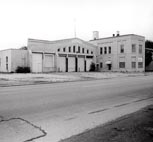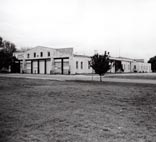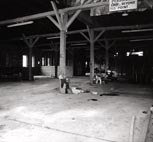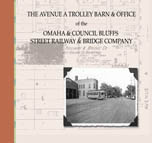Mitigation Projects
Mitigation projects are often undertaken as a means of creating some balance to a situation when a historic is lost. Such projects can take many forms. The following mitigation projects are two examples in which brochures were created to document the lost resource and to provide an accessible history of the resource and its historic context.
Avenue A Trolley Barn and Office – Pottawattamie County - Council Bluffs, Iowa
Related businesses, including a bus barn and a truck repair company, used the facility until the early years of the twenty-first century. But, like many large-scale facilities constructed for a very specific function, new uses were difficult to find.
When the Avenue A Trolley Barn and Office became vacant in 2003 and a new use could not be identified, the facility was slated for demolition, which was completed in late fall of 2006. Today a community park has been developed on the land formerly occupied by the Avenue A buildings, with the contributions made by the street railway system in the history of Council Bluffs commemorated at the site.
The Avenue A Trolley Barn and Office brochure was part of a Memorandum of Agreement arranged to mitigate the loss of this historic resource.
Download Avenue A Trolley Barn Brochure in PDF
 |
 |
 |
 |
Ideal Neighborhood – Webster County - Fort Dodge, Iowa
As time passed, towns grew into cities with trolley lines and the automobile easing access between downtown and the far reaches of an expanding city. As a result, a neighborhood ideally balanced with the intersection of home, work, worship, and learning close at hand, became less necessary and so, less typical.
The Ideal Neighborhood brochure was part of a Memorandum of Agreement arranged to mitigate the loss of two historic resources formerly located in this Fort Dodge neighborhood.


